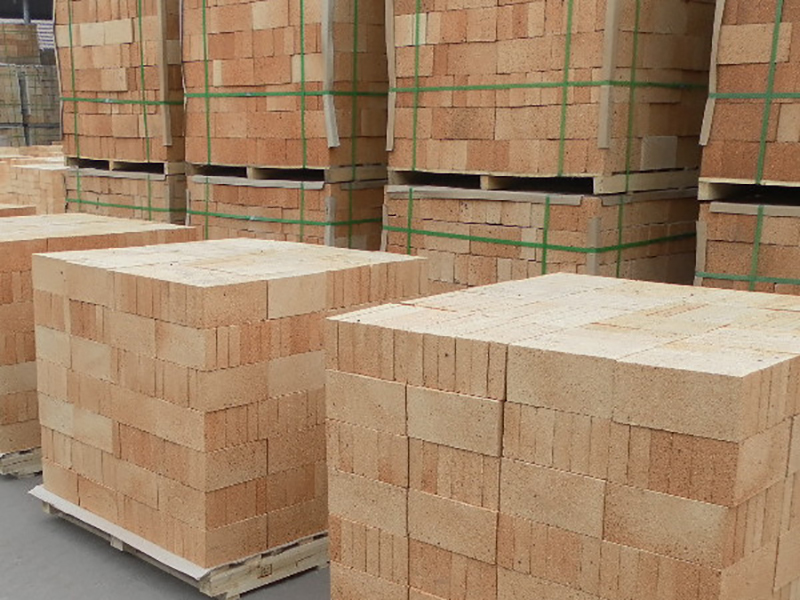Fireclay Brick: A Reliable Thermal Backbone for Industrial Furnaces
In modern high-temperature engineering, the demand for durable and cost-effective refractory materials remains constant. Among the most widely used and trusted solutions is the fireclay brick, a material recognized for its stable performance, versatility, and excellent value across numerous industrial applications. With a balance of thermal strength and economic efficiency, the fireclay brick continues to play a crucial role in furnace construction, kiln lining, and general refractory systems.
Material Characteristics That Define Performance
A standard fireclay brick is produced from clay materials rich in alumina and silica, fired at temperatures above 1300°C to achieve the necessary density and structural stability. The mineral composition—primarily mullite, cristobalite, and glassy phases—gives the fireclay brick its dependable resistance to temperature fluctuations and mechanical stress.
The most notable properties of the fireclay brick include:
Stable refractoriness up to 1700°C, allowing long-term service in a wide range of furnaces.
Good thermal shock resistance, especially in cyclic heating and cooling operations.
High mechanical strength, with the ability to bear heavy structural loads.
Resistance to chemical erosion, particularly against slag, ash, and combustion by-products.
Low cost per cubic meter, making the fireclay brick a highly economical solution for large-scale furnace construction.
Because of these qualities, the fireclay brick is often selected as the working lining or backup lining in applications where performance and cost must be carefully balanced.

Applications Across Industrial Sectors
The adaptability of the fireclay brick allows it to serve as a universal refractory material across many industries. In metallurgical operations, the fireclay brick is commonly used in reheating furnaces, soaking pits, ladle covers, and iron-making equipment. Its ability to withstand thermal cycling makes it appropriate for both batch and continuous processes.
In the ceramics and glass industry, the fireclay brick is used for kiln walls, kiln cars, burner blocks, and structural support components. It provides steady insulation and reliable hot-face performance, contributing to better temperature distribution and product quality.
For the petrochemical and power generation sectors, the fireclay brick is used in incinerators, boilers, heat-treating furnaces, and flue gas ducts. The brick's resistance to acidic gases and dust particles ensures a longer service life in these harsh environments.
Even in construction and domestic heating systems—such as fireplaces, wood stoves, and pizza ovens—the fireclay brick remains a preferred option due to its strength, affordability, and ease of installation.

Technical Versatility and Custom Manufacturing
Another advantage of the fireclay brick is its broad range of grades and shapes. From standard straight bricks to arch blocks, wedges, and insulating variants, manufacturers can supply fireclay brick products tailored to specific equipment designs.
Density options range from lightweight insulating fireclay bricks to dense fireclay bricks designed for heavy-duty, high-impact regions. This flexibility allows engineers to optimize thermal efficiency, mechanical support, and overall lining cost within a furnace system.
Special compositions containing higher alumina content are also available for applications requiring enhanced refractoriness and strength. With CNC cutting and precision molding, modern production makes it possible to customize fireclay brick solutions for complex furnace architectures.
Driving Efficiency and Operational Reliability
As energy costs continue to rise, industries increasingly look for refractory materials that improve thermal efficiency while maintaining operational safety. The fireclay brick answers this demand by delivering predictable performance and long-term durability. Its low thermal conductivity compared to heavy firebrick helps reduce heat loss, improving the overall fuel economy of thermal equipment.
Because the fireclay brick is easy to repair and replace, maintenance cycles become simpler and more manageable. This predictability reduces downtime, allowing manufacturing operations to maintain consistent output and quality.
Inquiry Now
Please leave your e-mail and we will contact you as soon as possible
contact us
Your satisfaction is our top priority. Whether you have questions, need support, or want to share feedback, our dedicated team is ready to assist you every step of the way.